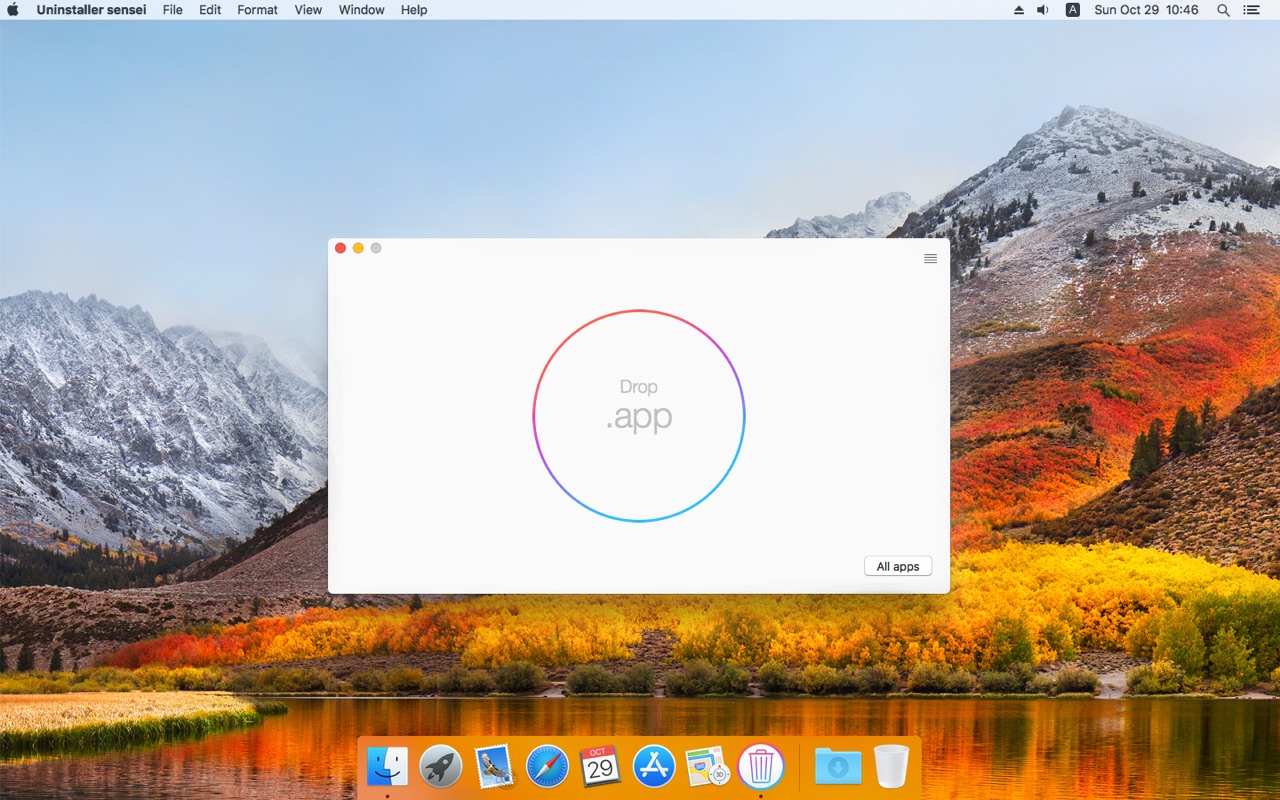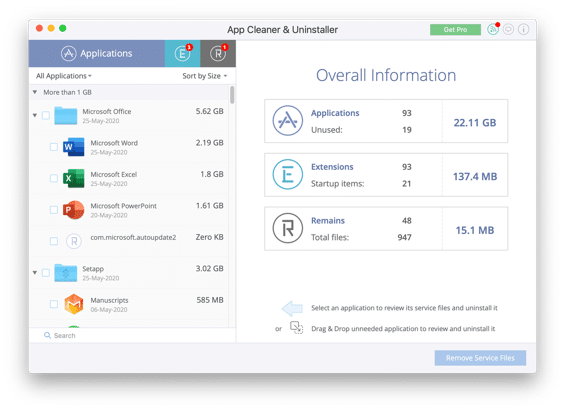Uninstaller Sensei 1 3 1 – Completely Remove Applications Must

‘If you’ve got time to lean, you’ve got time to clean’
Ray Kroc
- Uninstaller Sensei 1 3 1 – Completely Remove Applications Musty
- Uninstaller Sensei 1 3 1 – Completely Remove Applications Must Comply
- Uninstaller Sensei 1 3 1 – Completely Remove Applications Must Remove
Why should you keep your PC clean?
We are pretty sure a computer is an environment that must be kept neat and tidy – otherwise, it may fall apart from neglect. Indeed, junk makes your PC slow, unresponsive, and even vulnerable to multiple threats. Thus, if your machine seems suspiciously sluggish and acts weird, the chances are it is stuffed full of clutter.
Why does your computer become cluttered?
But where does that all garbage come from? Surprising though it may sound, your software generates it. The point is, the unwanted programs you delete do not vanish into thin air: their leftovers stay behind and clog your operating system, which turns your computer into a total mess.
Media Review 'If you need a program that lets you cleanly and completely uninstall applications, fire up IObit Uninstaller. This free utility makes it a breeze to delete apps, including stray files that are often left behind when you use Windows to delete software from your hard drive or SSD.
- It will not show up in the Windows Programs and Features program listing in the Control Panel so I can remove it that way and the instructions to completely remove AAM that are given on the web site simply do not work as I have NONE of the applications listed in AAM that purportedly will remove AAM if they are uninstalled.
- 'If you need a program that lets you cleanly and completely uninstall applications, fire up IObit Uninstaller. This free utility makes it a breeze to delete apps, including stray files that are often left behind when you use Windows to delete software from your hard drive or SSD.
- This should uninstall ur application. There are times when the shortcut of anaconda command prompt,jupyter notebook, spyder, etc exists, so delete those files too. Method2 (Windows8): Go to control panel-Programs-Uninstall a Program and then select Anaconda3(Python3.1. 64-bit)in the menu.
Undoubtedly, such an outcome is undesirable, since your PC is not a rubbish dump. Thus, it is essential to know how to remove apps’ leftovers from your computer. The good news is, you have come to the right place: we will help you declutter your device and skyrocket its performance.
P.S. If you don’t want to read the full article, you may simply watch a short video showing a quick fix here:
Ways how to remove apps’ leftovers from your PC
To begin with, there are basically two ways to sweep out the software debris from your machine. First, you can use special software to automate the process. Another method is to do the cleaning manually.
Employ a special tool
This approach will save you a lot of time and effort, as a thorough clean-up requires skill, precision, and a lot of resources. As such, we recommend you to find a reliable third-party tool for this purpose. For example, you can use Auslogics BoostSpeed: this powerful utility will check your Windows for junk, registry problems, speed-reducing issues, and vulnerabilities, and then it will tweak your OS for maximum performance.
Wipe software leftovers off your PC manually
Uninstaller Sensei 1 3 1 – Completely Remove Applications Musty
If you want to take matters into your own hands, you are free to clean up your system yourself. Here is our detailed guide on how to delete software leftovers:
Step 1. Use Control Panel to uninstall a program
Uninstaller Sensei 1 3 1 – Completely Remove Applications Must Comply
- Open your Start menu and locate the Control Panel option.
- Click on Control Panel. Navigate to Programs.
- Click on Programs and Features.
- Locate the piece of software you wish to uninstall.
- Click on Uninstall. Wait for the uninstallation process to finish.
- Get the all-clear to proceed and exit Control Panel.
Step 2. Check the Program Files and AppData folders
- Press the Windows logo key + S shortcut on your keyboard.
- Type %programfiles% into the Search box.
- The Program Files folder will open.
- See if there are any folders there that have the name of the uninstalled software. Delete such folders.
- Insert %appdata% into Search. You will be taken to the AppData folder.
- Repeat the step 4 from this list.
Step 3. Clean your Windows Registry
Please keep in mind that you should be very careful when modifying your registry, since one false move is enough to cause your system to go haywire. Therefore, we strongly advise you to use a reliable registry care utility. For instance, Auslogics Registry Cleaner is a free tool that will remove all the leftover keys and entries from your system registry so that you can enjoy a noticeably faster computer.
Nonetheless, if you still wish to edit the registry yourself, make sure to back up all your important data – just in case. Saving your files to an external storage device or migrating them to another computer are among the easiest ways to prevent permanent data loss.
You should also back up your registry – things do not always go as planned, you know. Here is how you can perform a registry backup:
- Press the Windows logo and S keys simultaneously.
- Type ‘regedit.exe’ (without quotes) into Search. Then Press Enter.
- Once you are in Registry Editor, select what you want to back up.
- Click on File. Then select Export.
- You should give your backup file a name.
- Choose the location to which you wish to save the file.
Uninstaller Sensei 1 3 1 – Completely Remove Applications Must Remove
To restore your registry, do the following: Screen focus 1 0 15.
- Go to your Registry Editor and click on File.
- Select the Import option. Locate and restore your backup file.


Now it is time to remove unneeded keys from your Windows Registry: https://downloadspecialist.mystrikingly.com/blog/imovie-download-for-mac-10-12-6. Pixelmator pro 1 2 4.
- Open your Registry Editor.
- Locate the following keys:
- HKEY_CURRENT_USERSoftware
- HKEY_LOCAL_MACHINESOFTWARE
- HKEY_USERS.DEFAULTSoftware
- If your PC runs a 64-bit version of Windows, you will need to check the HKEY_LOCAL_MACHINESOFTWAREWow6432Node key as well.
- Explore the keys mentioned above and see if you can find any keys with the name of the program you uninstalled. Delete such keys.
When trying to delete a key in Registry Editor, you may receive the following message: “Cannot delete key: Error while deleting key”. Do not worry, since you can easily tackle this issue. What you need to do is take the ownership of the key in question, and we will show you how to do that: Agriculture flat manual rate tractor free apps.
- Right-click on the key you failed to delete and select Permissions.
- Then select the Advanced option.
- If you are a Windows 7 user:
- Go to the Owner tab.
- Locate the ‘Change owner to:’ section and select your username.
- In addition, check ‘Replace owner on subcontainers and objects’.
- Click Apply and OK to save your changes.
- Those who run Windows 10:
- Navigate to the Owner section and click on Change.
- Once in the Select user or group window, go to the ‘Enter the object name to select’ area and enter your username.
- Make sure to click on the Check Names button. Then click OK.
- The Permissions for Display window will open. Once in the Security tab, go to the Group or user names box and select your username from the list.
- Go to the Permissions for Administrators section. Check Allow for Full Control.
- Click Apply and OK to save the changes.
Fallout 4 invisible pipboy fix. Now you can delete the registry key you have taken the ownership of.
Step 4. Remove the temporary files left on your computer
To do this, you should empty the Temp folders:
- Open the Search box by pressing the Windows logo key + S shortcut.
- Type ‘%temp%’ (without quotes) into Search. Press Enter. Empty the folder.
- Then type ‘temp’ (no quotes) into the Search bar. Hit Enter. Empty this folder as well.
- This is it. There are no traces of the deleted software left in your system.
Have our tips proved useful?
We are looking forward to your feedback!
Features:
- Completely remove any software! (using Install Tracker (Installation Monitor) and Uninstall Wizard ™ technologies)
- 3 Times Faster than standard removal program
- Uninstall System and Hidden programs
- Add/Remove Programs that automatically run at system startup
- Portable Mode: run from USB flash drive
- Uninstall Programs that could not be removed by Add/Remove program.
- Force removal of uninstall related registry & file system items
- Smart Search ™ allows quick finding of any application you need.
- Native X64 version for 64-bit versions of Windows (single setup)
- Batch Removal operations
- Highlighting of recently installed applications in the list
- Navigate to a selected program's Registry Entry, Installation Folder and its Web Site.
- View Detailed Information of a certain application installed on your computer.
- Easy to use and modern User Interface allows to work comfortably with Uninstall Tool.
- Multilingual interface with native support of 35 languages
- Control Panel icon, HTML reports, running different Windows tools and much more.
What's New:
- Optimized the app size (smaller)
- Translations update
- Fixed drawing disabled icons on a retina-screen
Software similar to Uninstall Tool 6
- 40 votesRevo Uninstaller is a freeware innovative uninstall utility.
- Freeware
- Windows
- 75 votesIObit Uninstalller helps you uninstall and remove unwanted programs and folders from your computer fast and easily.
- Freeware
- Windows
- 423 votesUninstall any program with the most advanced uninstaller software.
- Freeware
- Windows

Uninstaller Sensei 1 3 1 – Completely Remove Applications Must
UNDER MAINTENANCE